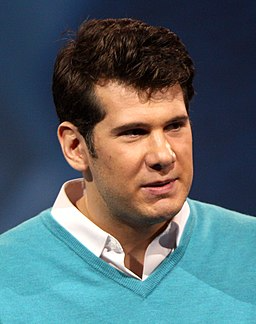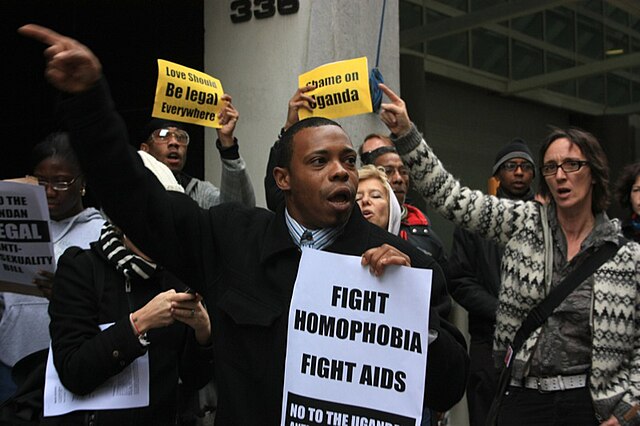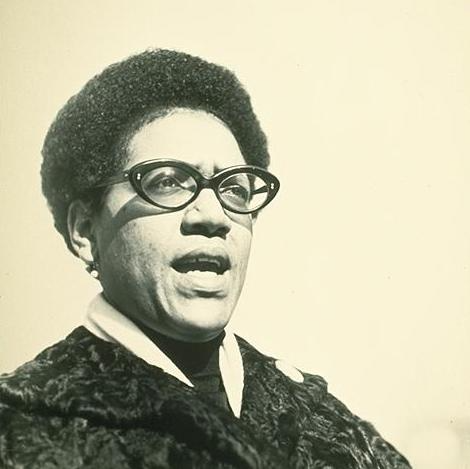4 Productive Discourse Is Responsible, Not Necessarily Polite
Chapter Objectives
Students will:
- Distinguish productive discourse through its responsibility to the audience and community for the accuracy and impact of claims rather than through its politeness or civility.
- Evaluate whether a public discourse produces a more, or less, inclusive and equitable public sphere.
- Identify policing discourse that determines preferred or appropriate ways of talking together when deliberating public issues.
- Recognize reasons why democratic participants may use rude, angry, or uncivil rhetoric.
In the previous two chapters, we explored qualities that influence whether communication functions productively or unproductively. In chapter 3, we defined productive discourse as public communication that is responsible to one’s community and manages differences constructively. In contrast, we described unproductive discourse in chapter 2 as purposefully sensational public communication designed to promote division and to misrepresent the complexities of public issues.
If we ended our explorations there, you might assume that productive and unproductive discourses are easily distinguishable, with clear-cut differences. However, actual public discourse is often more muddled with a mixture of qualities. Focusing only on discursive qualities—getting caught up in checklists—can lead to superficial conclusions and cause us to overlook what a rhetorical exchange is actually producing.
In this chapter, then, we explore cases where seemingly “civil” or polite discourse functions unproductively as well as when apparently “uncivil” or rude discourse functions productively. We will also consider why some rhetors opt for uncivil communication. We begin, however, by more closely scrutinizing what we mean by productive discourse.
Responsibility, Not Necessarily Politeness
If you read through the list of qualities we associate with productive discourse in chapter 3 uncritically or too quickly, you might mistakenly conclude we emphasize speaking “politely” or what some call civil speech: communication that maintains decorum by being respectful, dispassionate, and polite. In other words, don’t yell, avoid interrupting others, and talk calmly through disagreements.
However, such an equation is misguided. Borrowing from political theorist Benjamin R. Barber, our focus on productive discourse “is not about politeness; it is about responsibility.”[1] Speakers must be responsible to their audience and community for the accuracy and impact of their claims. That means productive discourse should ultimately produce something greater than a calm or friendly exchange; it should help build a more inclusive and equitable public sphere.
Productive discourse should help build a more inclusive and equitable public sphere.
Responsible public discourse, then, is public communication that draws on the qualities of productive discourse to produce a more inclusive and equitable public sphere. It may or may not be civil. Indeed, it may appear as uncivil speech—rhetoric that violates decorum because it is disrespectful, angry, and/or impolite.
So how can we determine when civil discourse operates unproductively and when uncivil discourse actually functions productively? Clues may be found by answering the following questions:
- Does the discourse attempt to spark or subdue discussion about an overlooked issue and ongoing societal problem?
- Does the rhetoric strive to include or exclude historically marginalized members of the public in democratic participation?
- Does this discourse attempt to preserve or question the power of historically dominant members of the public?
All together, these questions suggest that responsible public discourse encourages public discussion of overlooked or unresolved issues as it draws the voices, experiences, and knowledge of historically marginalized people into democratic discussions and decision-making. It also questions the social, cultural, and economic power of historically dominant people rather than unreflectively granting their perspectives authority.
Notice the questions posed here are worded as binary distinctions for clarity, but a public discourse might not be as clear-cut. In that case, you can ask if it leans more in one direction than another to make your judgment. The point is to avoid relying solely or superficially on the qualities listed in chapters 2 and 3 to determine productive and unproductive discourse. Instead, also answer these questions to help distinguish the two types of rhetorics. Let’s apply these questions to two different cases as examples.
Civil Discourse That Functions Unproductively

Some forms of public discourse may appear civil or use some qualities of productive discourse but actually function unproductively. We can look, for example, at “Change My Mind” videos by social media personality Steven Crowder.[2] In these YouTube videos that were popular in the early 2020s, Crowder sits at a table with a poster that makes a provocative and conservative-leaning claim, like “There Are Only 2 Genders,” “Common Sense Gun Control Is Nonsense,” and “Black Lives Matters Is a Terrorist Organization.” He usually recorded his conversation at a college campus with willing nearby participants.
In most of these videos, Crowder (and often his conversational partners as well) talks politely in ways that may seem to abide by several qualities of productive communication. He deliberates by engaging arguments and positions. He listens; he rarely interrupts the other person and does not typically raise his voice. He also appears to seek to learn what the other person thinks as he asks follow-up questions to clarify their position.
However, when we pay closer attention, we discover that Crowder’s polite discourse does not qualify as productive because his statements borrow unproductive qualities and contribute to a more exclusive and inequitable public sphere.
Let’s explore one example—“There Are Only 2 Genders”—by answering the questions posed earlier.
1. Question: Does the discourse attempt to spark or subdue discussion about an overlooked and ongoing societal problem?
Answer: Crowder’s question starts conversation on the important public issue of gender. He says he wants “real conversation” and does “not set up [topics] to be a debate.” Yet Crowder’s starting point for discussion is a declared resolution: “There Are Only 2 Genders.” This resolution was undoubtedly prompted by a national conversation that was already occurring about people who identify as transgender and nonbinary. Crowder’s resolution and the conversations it started did not highlight an overlooked issue. Rather, they reacted to the attention alternative genders were receiving. The resolution suggested an attempt to reverse or subdue that attention.
Furthermore, Crowder refers to the resolution as reflecting “my point of view” and spends every conversation defending it. He thus frames the topic as consisting of only two incompatible positions: for and against the resolution (dichotomous thinking).
During conversations, Crowder strives to prove the superiority of his position (winning). For example, he continually returns to four points to defend the presence of only two genders: that the gender theory that distinguishes sex and gender is “modern,” that legal documents historically used gender and sex interchangeably, that we must know the number of genders possible, and that intersexuality is an anomaly. Rather than attempt to explore more broadly and learn, he restricts conversation to these few, repeated points (dogmatism). His devotion to the resolution essentially shuts down, or subdues, actual deliberation of the topic.
2. Question: Does the rhetoric strive to include or exclude historically marginalized members of the public in democratic participation?
Answer: Though Crowder talks to marginalized members of the public (including a nonbinary person and a Black man), his resolutions typically seek to exclude them. If successful, for instance, arguing there are only two genders excludes the existence of transgender and nonbinary people.
Many of his recurrent debate tactics also unfairly exclude alternative perspectives and arguments. Rather than truly listen, he frequently depicts the other person’s views as leading to an inevitable conclusion—one that is very hard for them to defend. For example, he tells the first person he talks to (Thomas) that Thomas must name how many genders exist for his argument (that sex and gender are different) to have credibility “because we as a society have to know this.” Those who perceive gender as a spectrum cannot possibly identify the number of genders possible, since the concept of a spectrum eschews such simple categories.
Crowder also occasionally focuses attention on the other person’s character or affect rather than the issue by labeling the other person’s reactions (combativeness). For example, he says to the second person (Madison), “You’re getting very heated,” “You’ve been set up here from the get-go for it [what I say] to be offensive,” and “You’ve been very privileged in speaking over me.” Such comments shift attention from Madison’s arguments to their manner of speaking, implying their form of speech does not meet standards and should be stopped.
3. Question: Does this discourse attempt to preserve or question the power of historically dominant members of the public?
Answer: Crowder’s defense of two genders preserves power ascribed to historically dominant people: cisgender people who subscribe to a gender binary. It weakens attempts by marginalized community members (like transgender and nonbinary people) to claim power and legitimacy.
In fact, Crowder uses prepared knowledge in these conversations to preserve power. He goes into discussions knowing the topic and having prepared research. He continually refers, for instance, to gender theory being “modern” by starting with Simone de Beauvoir in 1948 and then being developed by John Money and Judith Butler. Those speaking with him, however, spontaneously decide to talk about the topic. They demonstrate varying degrees of knowledge or ability to speak eloquently on the spot, which makes some of them come across as unintelligent. Thus, Crowder strategically places himself in sites where his prepared knowledge becomes a source of power over conversational volunteers. He could instead give them a chance to ruminate or do their own research before conversing about the topic.
Together, the impacts of Crowder’s conversations are irresponsible and restrict the public sphere. He produces more entertainment than education as he seeks to prove the superiority of his beliefs and devalue opposing viewpoints. Those watching in person or online may be less likely to participate in public discourse because they fear being similarly combated or even humiliated. Thus, just because public discourse appears polite or “civil” does not mean it meets the criteria of productive discourse.
Uncivil Discourse That Functions Productively
On the flip side, some public discourse that appears uncivil by using qualities of unproductive discourse may actually function productively. We’ll focus on one such form: social protest.

The activist social movement ACT UP formed in 1987 to advocate for more and faster governmental resources to fight (the then lethal disease) AIDS. Short for the AIDS Coalition to Unleash Power, ACT UP sought to draw attention to the over fifteen thousand people—mostly gay men—who had contracted and died from the disease since it was discovered in 1981.
ACT UP members used a variety of communication tactics. Among their most memorable and notorious were evocative social protests, such as demonstrating outside—and inside—of Saint Patrick’s Cathedral during mass (“Stop the Church”), holding a mock trial of leaders who impeded AIDS funding and research, spreading the ashes of AIDS victims on the White House lawn, and wrapping the house of North Carolina Senator Jesse Helms in a giant yellow condom.
Evaluating these protests with the list of unproductive qualities named in chapter 2 could prompt us to judge them negatively. The actions communicated distrust, lack of listening, combativeness, and a focus on winning. Let’s pause, though, before we label the protests as uncivil and therefore unproductive. We need to explore how labeling rhetoric as uncivil can function as policing discourse.
Policing Discourse
Policing discourse is the use of rhetoric to determine preferred or appropriate ways of talking together when deliberating public issues. It functions to control or “police” communication that violates what is considered preferred or appropriate.
The call for civil speech is a policing discourse. People in positions of power have historically used this discourse to critique protesters. Critics tell protesters that they are “too radical,” “too angry,” or “too rude.” That is, protesters are charged with violating decorum by being disrespectful, angry, and/or impolite.
ACT UP was widely denigrated for adopting uncivil and thus inappropriate means of communication. In a 1989 opinion piece authored by The New York Times after the group’s cathedral demonstration, the newspaper concluded, “Arguments over AIDS, homosexuality and abortion are not going to be advanced by hysterics, threats or the disruption of religious services. They might be advanced by serious argument that reflects conviction.” The piece also claimed that ACT UP’s cathedral demonstration “offers another reason to reject both the offensive protesters and their ideas.”[3]
Notice the policing discourse at work by the Times in differentiating “serious argument” that’s worth listening to from “hysterics” that are not. By definition, policing discourse attempts to exclude or censor communication it deems uncivil. The implied instruction or demand is that protesters would be heard if only they “spoke appropriately” or “followed the rules” by adopting more acceptable forms of advocacy and argumentation.
Box 4.1 The Public Sphere, Rhetoric, and Inequality
In a democracy, community members are supposed to gather as equals. Regardless of differences in age, gender, sexuality, occupation, income, education, and so on, ideally, all community members can join in talking through public issues together. Recall from chapter 2 that Jürgen Habermas conceived of the public sphere as the gathering of community members to discuss matters of common concern.
Reality often fails to meet that ideal, however. For instance, not all members of a democracy get to participate. Philosopher Nancy Fraser has argued that gatherings of citizens have historically  been created through the exclusion of some members of society, such as the poor, women, and children.[4] In other words, certain men could talk with each other as equals by contrasting themselves with groups who were not even invited to speak or be heard in community conversations about public issues.
been created through the exclusion of some members of society, such as the poor, women, and children.[4] In other words, certain men could talk with each other as equals by contrasting themselves with groups who were not even invited to speak or be heard in community conversations about public issues.
Exclusions from deliberating in the public sphere continue to exist, even if they are often subtler than the open discrimination of America’s past. It is more difficult to participate in civic affairs, for instance, if you are living in poverty, less educated, undocumented, or a minor. Such exclusions might be simple accidents or weaknesses that have not yet been corrected, or they might be strategic.
Calls for civility may seem reasonable and, at times, well intentioned. However, policing discourse has historically been used primarily against social protesters who highlight injustice and call for change. By excluding their forms of communication, policing discourse shuts down their demands for equity and reform. Professors of communication Anna M. Young, Adria Battaglia, and Dana L. Cloud succinctly explain this tactic: “With the invocation of civility, calls for change are muted in favor of the status quo.”[5] In other words, labeling protest speech as uncivil ostracizes these rhetorics that expose something uncomfortable or unjust in the public realm. We saw how critiques of ACT UP’s protests as “hysterical” discounted their accusations and claims. As box 4.2 explains, scholars such as Audre Lorde and Maxime Lepoutre have warned that we should instead attend to uncivil, especially angry, speech for the insights and injustices it reveals.
Box 4.2 The Productivity of Angry Speech

To defend the productivity of some angry speech, the twentieth-century poet, professor, and activist Audre Lorde gave an address to the National Women’s Studies Association Conference in 1981 that she titled “The Uses of Anger.” Lorde noted that our culture has frequently branded public expressions of anger—particularly by women—as inappropriate.
Lorde challenged her audience to listen to the content behind anger. She told her audience we should “listen to the content of what is said [angrily] with at least as much intensity as we defend ourselves against the manner of saying.” She warned, “When we turn from anger we turn from insight, saying we will accept only the designs already known, deadly and safely familiar.”[6]
More recently, political theorist Maxime Lepoutre has similarly argued that “anger can and should play a key role in democratic public discourse.” Lepoutre claimed that “Public expressions of anger have a distinctive ability to reveal injustices, and to promote understanding of injustices, when these may otherwise have gone unnoticed or been misunderstood.” In “divided societies,” they explain, “injustices suffered by some groups are often invisible to, or misunderstood by, others.”[7] Thus, Lorde and Lepoutre suggest that some speech may be both angry and productive.
Uncivil Rhetoric That Functions Productively
Let’s consider, then, how ACT UP’s uncivil speech functioned productively by answering the three questions posed earlier:
1. Question: Does the discourse attempt to spark or subdue discussion about an overlooked issue and ongoing societal problem?
Answer: ACT UP’s protests sparked national discussions about AIDS at a time when the disease had killed tens of thousands of victims but was largely ignored in the broader public sphere. A major reason for silence was the disease’s negative perception as a “gay plague” (since it largely affected gay men) at a time when homosexuality was still heavily taboo and even illegal in many US states. President Ronald Reagan did not publicly recognize AIDS until 1985, after nearly six thousand people had died and the epidemic was raging. Congress was reluctant to fully fund research to cure it. The news media also were slow to seriously cover the epidemic. Though ACT UP’s efforts drew criticism, they also attracted national attention to AIDS, its victims, and the need for funding and humane treatment.
2. Question: Does the rhetoric strive to include or exclude historically marginalized members of the public in democratic participation?
Answer: ACT UP consisted of queer people and their allies, who lacked easy access in the 1980s to traditional means of deliberation and advocacy due to their sexuality. Religious leaders condemned gay people as immoral. Even as late as 1993, the Reverend Billy Graham suggested that AIDS was God’s punishment for gay people (though he later apologized).
When gay people did advocate publicly, their arguments and experiences were not necessarily taken seriously by political leaders. In 1982, when a journalist asked Reagan’s press secretary, Larry Speakes, if the president had a reaction to the six hundred documented cases of AIDS, Speakes made light of the disease by joking that he didn’t have AIDS while other media members laughed.
ACT UP’s efforts, then, empowered queer people who were clearly marginalized from the public sphere by shifting the narrative from them as shameful sinners to advocates who deserved serious recognition and support.
3. Question: Does this discourse attempt to preserve or question the power of historically dominant members of the public?
Answer: ACT UP’s communication directly challenged the social power of political and religious leaders who devalued and discredited the homosexual community. Their protests turned the tables by encouraging onlookers to question the morality, decency, and ethics of the very leaders who condemned gay people. The giant condom over Helms’s house visually suggested he was an unsafe leader that the public needed to be protected against. The cathedral protest, mock trial, and dumping of ashes on the White House lawn all implied that political and religious leaders were responsible for allowing the epidemic to grow and kill. The protests characterized these leaders’ accusations against homosexuals and silence about AIDS as unethical and unfair.
Consequently, while many of their protests qualified as uncivil, ACT UP’s communication functioned productively, because it produced a more inclusive and equitable public sphere. It’s telling that while ACT UP faced heavy criticism in its day, today it is widely seen as an incredibly successful and important social movement.
Why Use Uncivil Rhetoric?
You might still wonder, however, why do protesters ever adopt angry or rude (uncivil) rhetoric when they could instead choose to communicate more respectfully and politely (civilly)? Scholars have provided several answers: Protesters typically lack easy access to the public sphere, uncivil protest demands attention that might otherwise be difficult to attract, and uncivil communication reflects frustration and anger.
First, because marginalized people typically have less access to power in the civic arena, it is harder for them to influence public discussion and policies through traditional, acceptable means. Professors of communication Nina M. Lozano-Reich and Dana L. Cloud have noted that:
The powerful rarely are willing to invite those less powerful into dialogue; the oppressed are hard pressed to convince oppressors who benefit materially from oppression to be open to dialogue, let alone radical change. Many discussions are by ‘invitation only,’ a phrase suggesting that invitation belongs to those who set the rules for exclusion.[8]
In other words, because they call for change, marginalized groups (the oppressed) lack easy access to public deliberations that use traditional, civil means of expression. It’s not in the interests of the powerful to invite the oppressed into such civil discussions. Consequently, marginalized groups must often turn elsewhere to advocate for change.
Second, those marginalized groups excluded from the public sphere tend to form what Fraser has called subaltern counterpublics: gatherings of people excluded or dissuaded from the public sphere who raise issues ignored or trivialized by the broader public.[9] In other words, their very exclusion from the public sphere tends to encourage people to come together on their own. They find affirmation and a sense of belonging among one another.
Members of counterpublics learn and teach each other methods of challenging their exclusion in the broader public sphere, such as social protest. Indeed, sometimes social protest is the only way for members who are excluded from, or devalued in, the public sphere to influence public discussion and policies. They adopt the kind of rhetoric that, due to its incivility, demands attention.
Finally, social protest by the oppressed typically reflects their anger and frustration. Their voices, needs, and calls for change using traditional means have been ignored, devalued, and/or discredited. Consequently, civil speech—especially when defined as dispassionate and polite—cannot adequately express the hurt and frustrations of their lived experiences and the vigor of their demands for change. As Lorde and Lepoutre explain (in box 4.2), anger is sometimes better able to communicate the presence and ongoing harms of injustice.
Box 4.3 Not All Uncivil Rhetoric Is Productive
Not all public protest that utilizes uncivil speech functions productively. Recall in chapter 2 that we named incivility as a quality of unproductive speech that some people use to gain attention and silence detractors.

We can look to the August 11 and 12, 2017, “Unite the Right” rally in Charlottesville, Virginia, as an example. Participants marched at night with tiki torches on the University of Virginia campus, chanting “Blood and soil” (a phrase that evoked Nazi rhetoric) and the antisemitic expression “Jews will not replace us.” The next day they carried Nazi and neo-Nazi symbols, Confederate flags, and weapons. Featured attendees, such as KKK leader David Duke, organizer Jason Kessler, and neo-Nazi Richard Spencer promoted white supremacy.
Here we have a social protest that used uncivil speech: It was impolite, combative, and angry. It was also accompanied by violence. Physical confrontations broke out with counterprotesters, and white supremacist James Fields drove his car into counterprotesters, killing Heather Heyer and injuring thirty-five people.
The violence was egregious, and we do not diminish it. But even if we focus only on the protesters’ communication, we can determine that it was unproductive in increasing the inclusivity and equity of the public sphere. To understand why, we return again to the three criteria established earlier.
1. Question: Does the discourse attempt to spark or subdue discussion about an overlooked and ongoing societal problem?
Answer: The march was held in Charlottesville in reaction to the city’s decision to remove a statue of Confederate General Robert E. Lee and rename the park in which it was located. Lee’s statue was the seventh such statue removed in Southern states since 2009, reflecting a national conversation about monuments, white supremacy, and racial violence. The “Unite the Right” rally, then, attempted to subdue that discussion by showing support for keeping the statue and intimidating people who disagreed.
2. Question: Does the rhetoric strive to include or exclude historically marginalized members of the public in democratic participation?
Answer: By featuring known white supremacists and chanting Nazi and antisemitic rhetoric, the protest clearly sought to exclude any Americans who are Jewish or not white from civic engagement. The violence also suggests that some members wanted to physically stop anyone who disagreed with their ideology from speaking against it.
3. Question: Does this discourse attempt to preserve or question the power of historically dominant members of the public?
Answer: By promoting white supremacy and antisemitism, the protest explicitly sought to preserve the power of white, Christian Americans, who have historically occupied positions of cultural and economic privilege in the US.
Consequently, not all protest that uses uncivil expression functions productively. Therefore, we challenge you to examine the functions of uncivil rhetoric before you condemn or champion it.
Recall that productive discourse is about responsibility, not necessarily politeness. Responsible public discourse is public communication that draws on the qualities of productive discourse to produce a more inclusive and equitable public sphere. When we evaluate public discourse more carefully, we are cautioned against uncritically using a list of qualities to label a rhetoric as productive or unproductive. Otherwise, on one hand, we might fail to recognize forms of expression that seem civil but actually exclude marginalized perspectives and perpetuate inequity. If we call these discourses productive, we, too, may unintentionally constrict the public sphere and block challenges to the status quo and powerful interests.
On the other hand, we might also fail to appreciate social protest that appears uncivil but strives to expand democratic participation and increase equity. If we label these as unproductive, we may inadvertently help eliminate participants, reinforce inequality, and strengthen policing discourse that demands “acceptable” speech. These are important aspects of public discourse we hope you will keep in mind as you promote civic engagement in your many public relationships.
Summary
This chapter returned to distinctions we made in earlier chapters between unproductive and productive discourse. It warned against using lists of qualities in overly simplified ways that miss the goal of productive discourse: to build a more inclusive and equitable public sphere. Specifically, in this chapter you have learned:
- Responsible public discourse is public communication that draws on the qualities of productive discourse to produce a more inclusive and equitable public sphere.
- We can better distinguish productive discourse through its responsibility to the audience and community for the accuracy and impact of claims rather than through its politeness or civility.
- Policing discourse is the use of rhetoric to determine preferred or appropriate ways of talking together when deliberating public issues. It functions to control or “police” communication that violates what is considered preferred or appropriate.
- The call for civil speech—communication that maintains decorum by being respectful, dispassionate, and polite—is a policing discourse. People in positions of power have historically used civil discourse to critique protesters by accusing them of using uncivil speech: rhetoric that violates decorum because it is disrespectful, angry, and/or impolite.
- Marginalized groups may choose uncivil speech to protest because they lack easy access to the public sphere where civil discourse occurs, uncivil protest demands attention they otherwise struggle to attract, and their communication reflects their frustration and anger.
Key Terms
civil speech
counterpublic
policing discourse
responsible public discourse
uncivil speech
Review Questions
- What three criteria must be met for rhetoric to qualify as responsible public discourse?
- What is considered civil speech? Uncivil speech?
- What is policing rhetoric? At whom is it usually directed? To what ends?
- What are reasons why some groups adopt uncivil rhetoric?
Discussion Questions
- What are the benefits and drawbacks of social protesters’ use of uncivil speech?
- Can you think of additional criteria to determine if a rhetoric functions as responsible public discourse?
- Name a contemporary counterpublic. Is this counterpublic a source of empowerment or isolation? How is the counterpublic included or excluded from public discourse? Explain.
- Benjamin R. Barber, A Place for Us: How to Make Society Civil and Democracy Strong (New York: Hill and Wang, 1998), 122 (emphasis added). ↵
- Steven Crowder, Change My Mind, YouTube playlist, accessed July 4, 2024, https://youtube.com/playlist?list=PL3e1orPYt_4ZHGjuivZFsyJ81RL7j7_E1. ↵
- “The Storming of St. Pat’s,” New York Times, December 12, 1989, https://www.nytimes.com/1989/12/12/opinion/the-storming-of-st-pat-s.html. ↵
- Nancy Fraser, “Rethinking the Public Sphere: A Contribution to the Critique of Actually Existing Democracy,” Social Text 25 (1990): 56–80. ↵
- Anna M. Young, Adria Battaglia, and Dana L. Cloud, “(Un)Disciplining the Scholar Activist: Policing the Boundaries of Political Engagement,” Quarterly Journal of Speech 96 (2010): 431. ↵
- Audre Lorde, “The Uses of Anger: Women Responding to Racism,” in Sister Outsider: Essays and Speeches (New York: Crossing Press, 2007), 131. ↵
- Maxime Lepoutre, Democratic Speech in Divided Times (Oxford: Oxford University Press, 2021), 51, 59. ↵
- Nina M. Lozano-Reich and Dana L. Cloud, “The Uncivil Tongue: Invitational Rhetoric and the Problem of Inequality,” Western Journal of Communication 73 (2009): 221–22. ↵
- Fraser, “Rethinking the Public Sphere.” ↵


